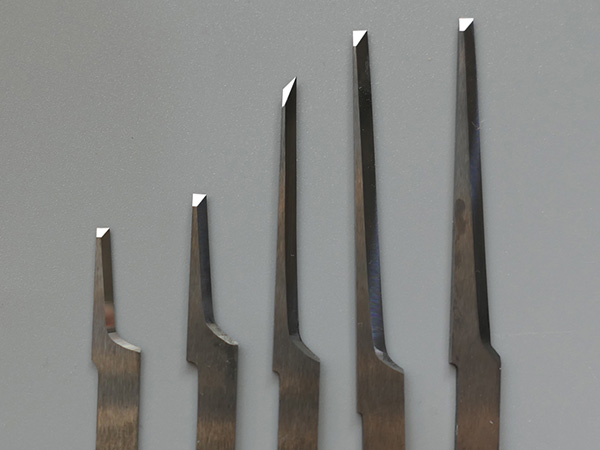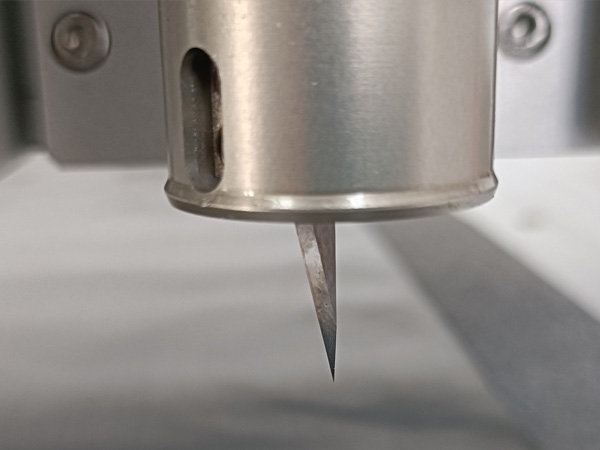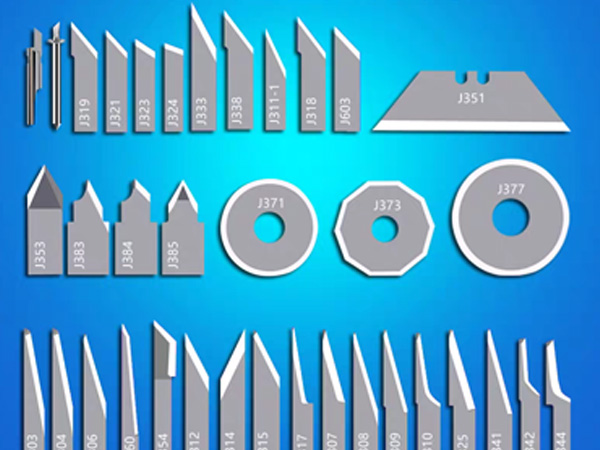Oscillating knife cutting machines are pivotal in various industries, ranging from textile manufacturing to packaging and automotive interiors. These machines offer precise and efficient cutting solutions that can handle a wide array of materials. However, choosing the right blade for an oscillating knife can be a daunting task for many clients, given the numerous options and specifications available. Below, I will guide you through three critical considerations to help you select the ideal blade for your specific needs: blade length, shape, and rigidity.

Understanding the Importance of Blade Length
The length of the blade is crucial and should be chosen based on the thickness of the material to be cut. Common blade lengths include 10mm, 15mm, 25mm, 30mm, and up to 45mm, etc. With some specialized blades extending up to 120mm. A general rule of thumb is to select a blade length that is at least 5mm longer than the thickness of the material. This ensures that the blade can cut through the material efficiently without being too long, which could lead to unnecessary tool wear and decreased accuracy.

For example, when cutting thin materials such as foils or papers, a 10mm blade might suffice. In contrast, thicker and more robust materials like corrugated cardboard or foam panels may require blades of 30mm or longer to achieve clean and precise cuts.
Choosing the Right Blade Shape
The shape of the blade is another critical factor that depends on the angle and the specific cutting application. Blade angles vary and are tailored for different cutting dynamics and material properties. Here are some common angles and their ideal uses:

0° Blades: Best for perfect circles and intricate details in low-density materials up to 8mm-50mm thick, such as acoustic panels or EPE. These blades minimize overcutting issues that can arise from wider blades.
16° Blades: Ideal for cutting small diameters in soft materials ranging from 1mm to 3mm, like thin rubbers, where precision is crucial.

23° and 26° Blades: These are versatile for medium-density materials, providing a good balance between sharpness and strength.
30° and 35° Blades: Suited for denser and more rigid materials where a steeper angle can help in reducing drag and improving cut quality.
Choosing the correct blade angle ensures that the cutting process is as efficient as possible, minimizing wear and tear on both the blade and the machine.
Assessing Blade Rigidity
Blade rigidity is determined by its thickness and the angle of the cutting edge. Blades come in various thicknesses such as 0.63mm, 1mm, and 1.5mm. Thicker blades offer more rigidity, which is essential when cutting harder or denser materials.

In such cases, a rigid blade ensures that the cutting process is smooth and that the blade does not flex undesirably. For example: when customers cut EVA foam with a hardness greater than 50°, we recommend that customers choose a tungsten steel blade with a thickness of 1.5mm to enhance the rigidity of the tool and ensure continuous cutting of high-density materials.
In addition to thickness, modifying the cutting angle or blunting the tip of the blade can enhance its ability to cut through hard, dense materials more effectively. For instance, using a blade with a blunted tip can reduce the incidence of chipping or breaking when working with tough materials like graphite-reinforced plates with built-in stainless steel.

Conclusion
Selecting the right blade for your oscillating knife-cutting machine is critical for achieving optimal cutting results and maintaining the efficiency of your operations. By considering the blade length, shape, and rigidity in relation to the material you are cutting, you can ensure that your machine performs at its best.
Remember, the right blade not only improves the quality of the cut but also extends the life of your cutting equipment, making it a crucial investment for any business relying on precision cutting tools.



